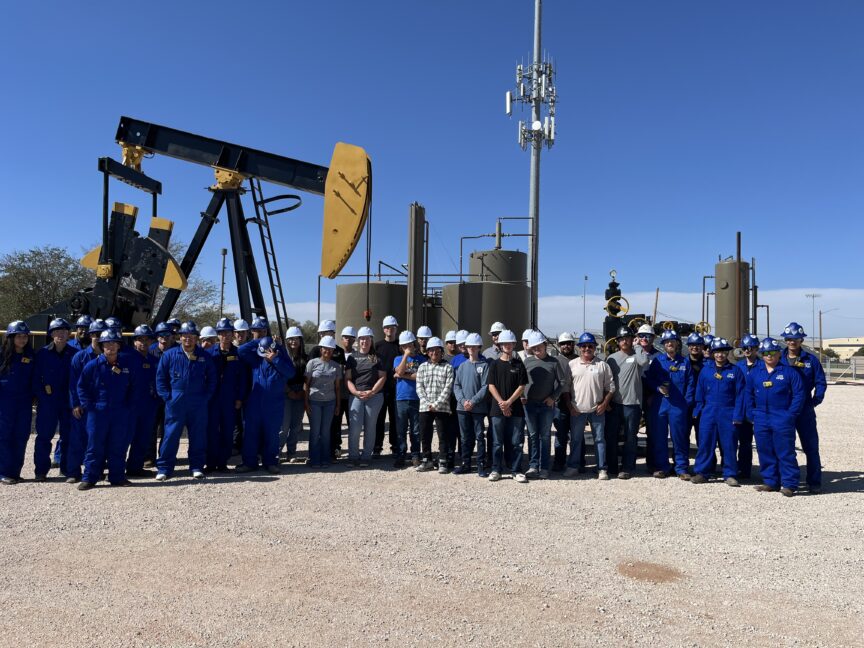It Takes a Village: Lovington’s Community-Lead Innovation
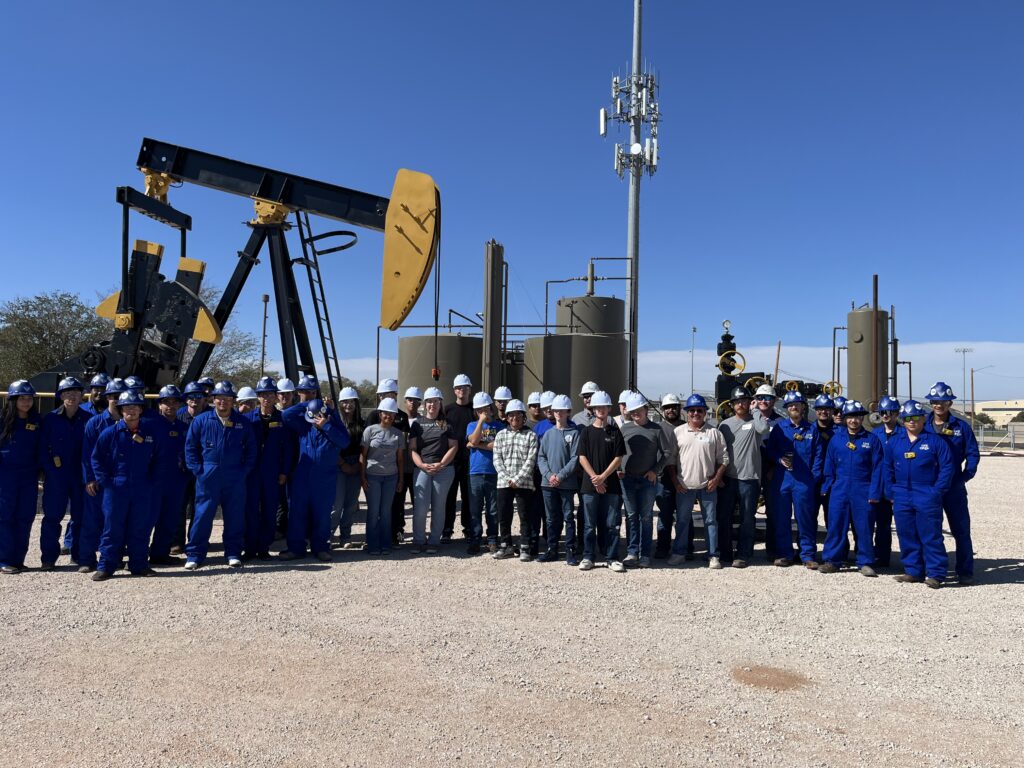
Lovington Oilfield Pre-Employment Program students on site.
Just 18 miles from the Texas border, a small city of 11,000 people appears as a smattering of buildings - homes, businesses, churches, strip malls - on the expansive desert horizon. The residents of Lovington, New Mexico brag about the expectations that their youth have for themselves and each other and about the community they create together. Their home is part of the Permian Basin, the largest oil producing basin in the United States and major source of New Mexico's wealth. It’s also home to the Lovington High School Wildcats - students who Andrew Sloan, the Career and Technical Education Coordinator for the district, characterizes as hard working and well-rounded - caring just as much about art and academics as athletics.
“It's not unheard of for band members to also play on our football or soccer team,” explains Sloan. “Our kids are in a lot of different activities, which I think is different in this era of specialization.”
Lovington students, according to Sloan, revel in doing more.
“Lovington really is a reflection of New Mexico and our demographics, our challenges,” adds Kerry Parker, Assistant Superintendent of Lovington Schools. “We have incredible students. We have an incredible community.”
That community has championed Lovington education administrators, students, and teachers in the last three years as they have worked together to create and begin implementing their strategic plan and graduate profile, which identifies the community’s most needed skillsets and hopes for Lovington graduates. This process has involved a transition from traditional electives to structured career pathways, allowing students to explore their interests from middle school through high school. It has also included building out new Career and Technical Education (CTE) pathways, starting a wellness center on campus, and expanding work-based learning (WBL) opportunities.
These new plans and programs have been funded in part by New Mexico Public Education Department’s (NMPED) Innovation Zone (IZ) Initiative. The initiative, which launched in 2021, provides participating schools with funding and technical assistance to develop graduate profiles and implement work-based learning and Career and Technical Education programs, capstone projects, personalized student supports, and other programs aligned with core academics.
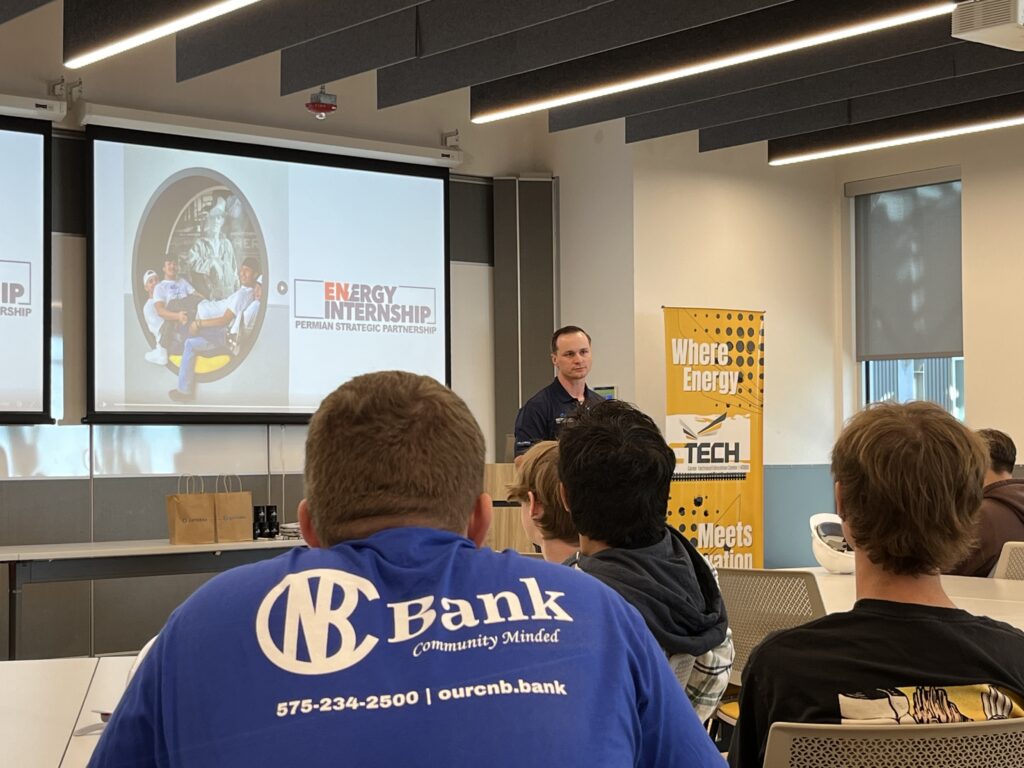
Energy internship students in class.
Portrait of a Wildcat and Strategic Plan: Guiding Frameworks
One of the first steps Lovington took toward innovation was to create their graduate profile, which is a document that outlines the knowledge, skills, and attributes a school aims for its graduates to possess upon completion of their studies. The Portrait of a Wildcat lists adaptability, communication, confidence, integrity, and critical thinking as the desired attributes of Lovington graduates.

Lovington's Graduate Profile
The graduate profile led the way for Lovington’s strategic plan, which details the district’s vision and mission in light of the graduate profile’s desired attributes and highlights initiatives to prioritize, resources to allocate, and ways to measure progress. It serves as a vision for student success, ensuring that every initiative - whether in academics, CTE, or student support - aligns with the district’s mission of fostering engaged, career-ready graduates.
According to Lovington High School Principal Trey Williams, the community and student involvement in the creation of the Portrait of a Wildcat and the Strategic Plan has made all the difference because it’s not just a top down decision.
“It wasn't just an administrator or a teacher putting this out there, it was a true whole voice of the community and student population,” says Principal Williams. “And they've had a tremendous say in what we've done.”
Community involvement didn’t stop after the graduate profile or the strategic plan - it’s an ongoing collaboration with local industry leaders and partners.
“It wasn't just an administrator or a teacher putting this out there, it was a true whole voice of the community and student population. And they've had a tremendous say in what we've done.” - Lovington Principal, Trey Williams
Career and Technical Education (CTE) Pathways and Work-Based Learning
Over the past three years, Lovington Schools have dramatically expanded their CTE offerings. Students now have access to eight career pathways, including a nationally recognized Oilfield Pre-Employment Program (OPEP) that prepares students for careers in New Mexico’s energy sector.
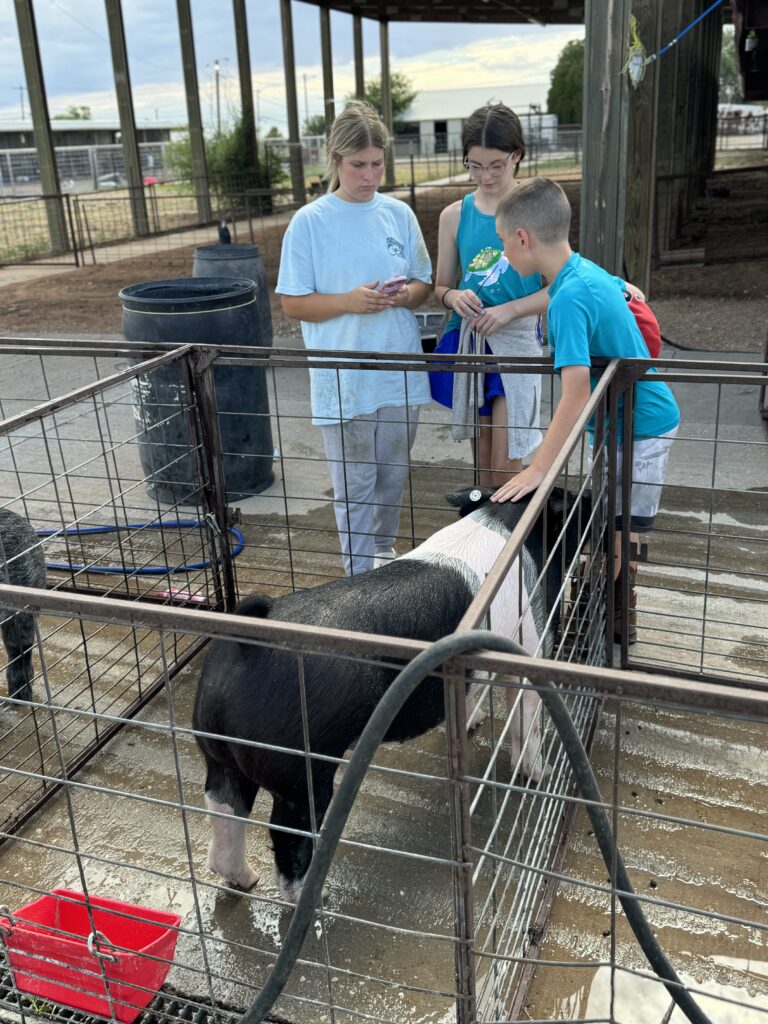
Agriculture students with their pig.
Lovington is also one of the few high schools to offer training for future sports medicine professionals through their Health Science & Sports Medicine pathway. They offer a robust Media Arts program that includes Digital Film, Mass Media, and Animation. Plus Culinary Arts, Agriculture, Engineering Design Technology, Business, Human Services, and Welding - all hands-on programs that equip students with marketable skills. To offer these innovative educational experiences, it takes many people in their community working together to create desirable opportunities for their youth.
By connecting middle school students to career pathways early, Lovington ensures that students enter high school with a clear direction and opportunities to build specialized skills that could help them pursue either career or higher education paths after graduation.
A standout feature of Lovington’s innovation efforts, as with many Innovation Zone schools, is its paid work-based learning program. Funded in part by Innovation Zone grants, students gain real-world experience while earning wages. This keeps them engaged in their unique educational journeys by giving them financial incentive, mentorship, and soft skills that they’ll use in any career path. For many students, these innovative offerings are key to reaching their graduation milestone
“We had a student who was on the verge of dropping out,” says Principal Trey Williams. “Through work-based learning, he found purpose, stayed in school, and is now on track to graduate.”
Lovington also partners with New Mexico Junior College and the Career and Technical Education Center in Hobbs (CTECH) to give students
ac
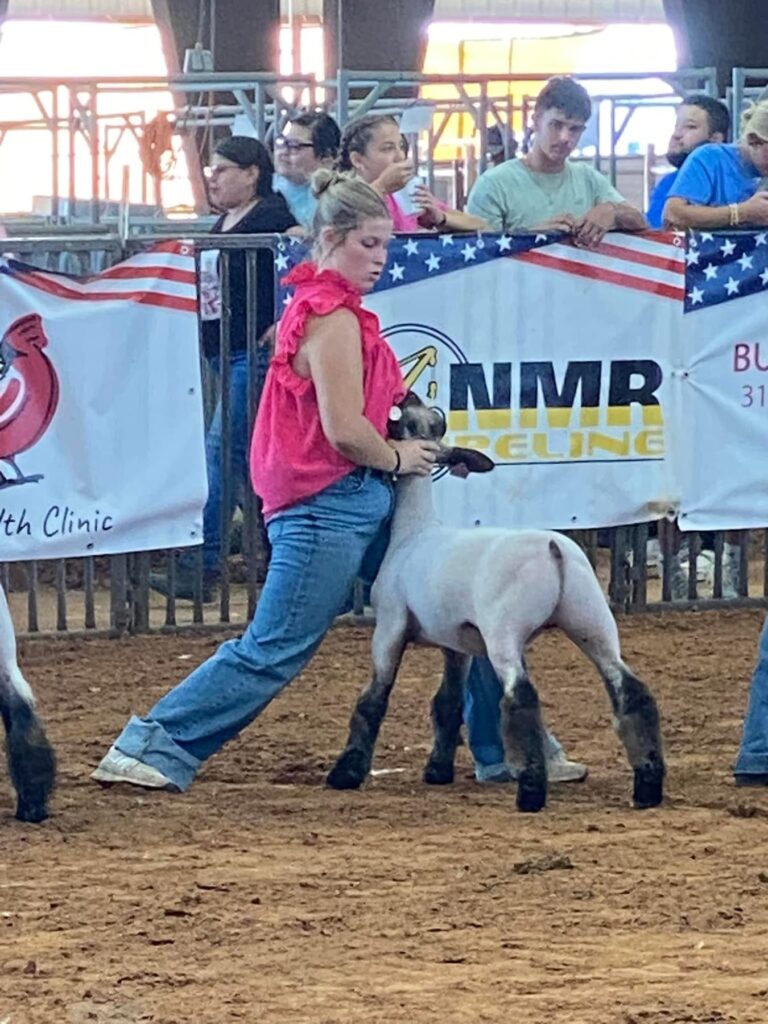
An agriculture student showing her sheep.
cess to advanced training in fields like welding, automotive technology, and energy
production. With 650 of their 1,100 students enrolled in at least one CTE course, the district is proving that career preparation is essential to student success.
CTE Coordinator Andrew Sloan also emphasizes the importance of work-based learning for student engagement.
“We’ve seen attendance improve and engagement skyrocket when students connect their coursework to real-world careers,” Sloan says.
“Having the opportunity of a work-based learning experience in a local engineering firm has been a very cool experience. I’m on an actual project team that does client work. Not bad for a 17-year-old.” - An 11th grade student in the engineering program
Community Partnerships: A Game-Changer
A major driver of Lovington’s success has been its commitment to strong community partnerships. Three years ago, the district had no advisory groups for its CTE programs. Today, around 50 industry leaders in all eight of the school’s CTE pathways serve as advisors to help educators shape curriculum, provide mentorship, and even fund student opportunities. The ongoing input of folks who are actively working in each industry is a crucial component of creating successful CTE curriculum, internships, and overall pathways.
“With the Oilfield Pre-Employment Program course in Lovington really taking wings this year, it has been incredible to see some of these kids find their passion and witness their lightbulb moments,” says Becca Meyers from Coterra Energy.
Meyers has built strong relationships with the team at Lovington High School and with students, which has helped her and Coterra feel incorporated into the Lovington community and will maybe even result in some future employees. Regardless, the process is rewarding for everyone involved.
“I’d like to believe I’m becoming a friendly, familiar face at Lovington High School and in Lovington,” says Meyers. “I really do love the people and I want to utilize every resource we have available to support kids and families in our communities.”
Students feel so much more empowered and supported when they not only see pathways to careers, but also get to connect with folks in those careers.
“I was ready to drop out. I’m not cut out for pure textbook learning,” says a 12th grade Lovington student. “Then I heard about a program inside of our Energy CTE Career Cluster – Oilfield Pre-Employment Program. It changed my view of school for the better.”
An 11th grade student in the engineering program says: “Having the opportunity of a work-based learning experience in a local engineering firm has been a very cool experience. I’m on an actual project team that does client work. Not bad for a 17-year-old.”

LoOilfield Pre-Employment Program students on site.
Challenges, Lessons, and Advice for Other Schools
Lovington’s journey hasn’t been without obstacles. Leaders emphasize the need for adaptability when implementing new programs.
“You have to be willing to zig when you thought you were zagging,” says Williams. “It’s a learning process, and you adjust as you go.”
Sloan adds that collaboration is key. “We visited other schools, asked questions, and learned from their successes. But at some point, you just have to start - don’t wait for perfection.”
Lovington Schools are proving that innovation in education is not a one-size-fits-all approach; it takes a village. It’s about working with your community to find where the needs and the opportunities are and then involving community and industry partners in the decisions that are made about what students need to learn and how they learn it. By expanding career pathways, prioritizing wellness, and forging strong community partnerships, they are setting a new standard for student success in New Mexico. With continued funding and collaboration, Lovington’s model can inspire schools across the state to reimagine what’s possible.


